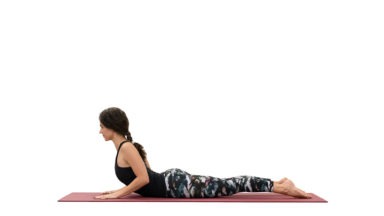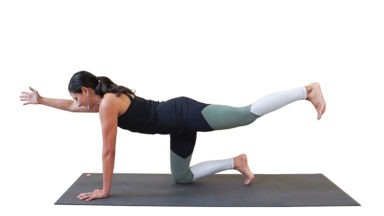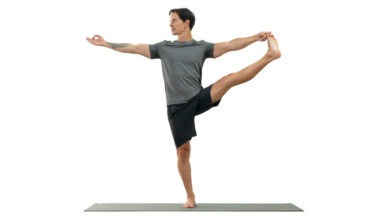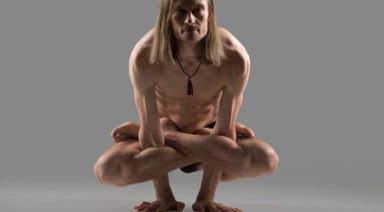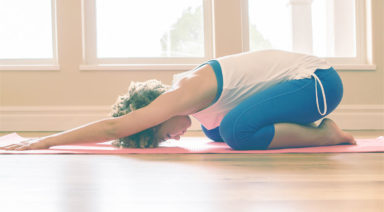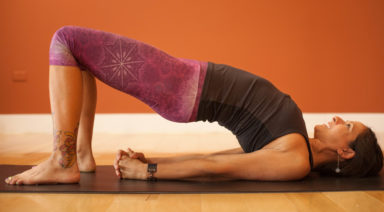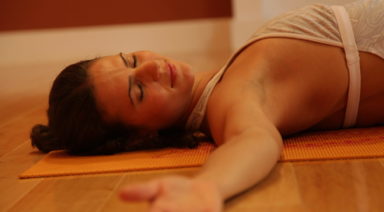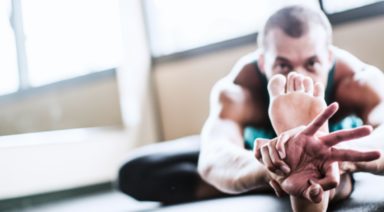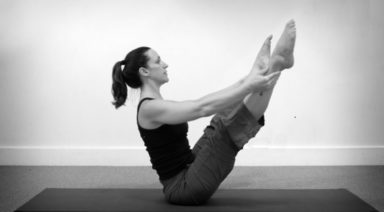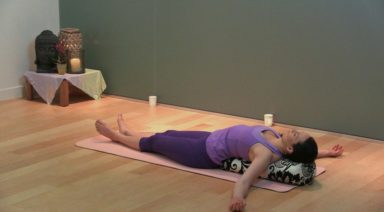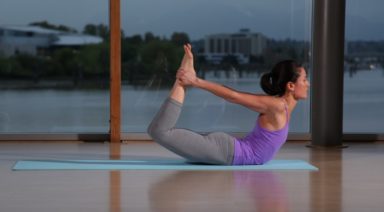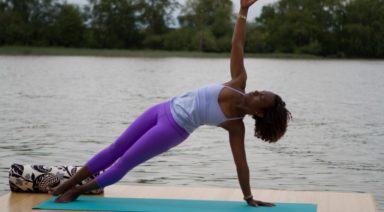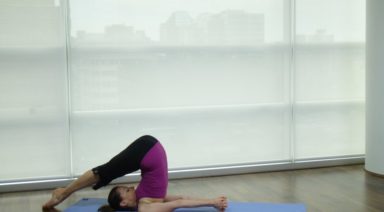Hanumanasana: Front Splits Pose

ADJUSTMENTS | BENEFITS | SEQUENCING | SANSKRIT | STEPS
Hanumanasana (hah-new-mahn-AHS-ah-nah) honors the great leap made by Hanuman, the famous monkey god from the Ramayana, across the ocean from India to the mountains of Sri Lanka. Front splits pose demands flexibility, strength, and stability.
Philosophy + Origin
More than just an incredible leap, Hanuman is remembered, celebrated, and worshiped because of his great devotion and courage. To be devoted, one must be bold enough to stand firmly in their beliefs, selflessly serving others and putting others’ needs above their own.
Because of its physical demands, it’s easy to get caught up in “achieving” the outward appearance of the posture. As such, it’s important to keep your ego in check as you dedicate yourself to the posture. Above all, invite kindness and selflessness to flow freely from the posture. As you practice, ask yourself how you can embody Hanuman’s devotion both in your physical yoga practice and your everyday life.
ADJUSTMENTS/MODIFICATIONS:
- Use a bolster or blanket under your pelvis to support working on flexibility in the hamstrings and hip flexors.
- Use blocks under your hands to keep the front and back of the torso evenly elongated.
- Place a blanket under your back knee to offer more padding.
- Place a blanket under your front heel to facilitate the actions of the pose.
STEP-BY-STEP:
- Practice hanumanasana away from your sticky yoga mat. Start by kneeling on wood or carpeted floor and then step your right foot forward.
- Shift your hips back and begin to straighten your front leg.
- Press your fingertips into the floor or blocks for stability. Tuck your left toes under and slide your left knee behind you.
- Slide your right heel forward, flexing your toes up toward the sky.
- Engage your legs by pressing through your right heel and drawing your right hip back. Keep your right kneecap pointing toward the sky.
- Allow the pelvis to lower down closer to the floor or onto a bolster.
- If you feel stable, option to bring your hands into anjali mudra (hands at heart center) or straight overhead.
- Hold the posture for up to 60 seconds, then slowly press your hands into the ground and lift your hips. Release back to kneeling.
- Repeat on the other side.
PREPARATORY POSES:
- Half front splits pose | Ardha hanumanasana
- Crescent lunge | Anjenayasana
- Reclined heros pose | Supta virasana
SEQUENTIAL POSES:
- One leg king pigeon pose 2 | Eka pada rajakapotasana 2
- Lord of the dance pose | Natarajasana
- Wide angle seated forward bend | Upavistha konasana
COUNTER POSES:
- Bound angle pose | Baddha konasana
- Seated forward fold | Paschimottanasana
- Forehead to knee pose | Janu sirsasana
SANSKRIT:
- Hanuman = monkey god
- Asana = pose
PHYSICAL BENEFITS:
- Stretches hamstrings, groins, and hip flexors.
- Strengthens the abductor muscles of the thighs.
- Thought to strengthen the muscles of the pelvic floor and abdomen.
ENERGETIC BENEFITS:
- Thought to encourage patience and compassion.
Legal Disclaimer Before participating in any exercise program or using any fitness products or services that may be described and/or made accessible in or through the Gaia Website and/or the Services, you should consult with a physician or other healthcare provider. Read more about Gaia’s Terms Of Use.
Bhujangasana: Cobra Pose

ADJUSTMENTS | BENEFITS | SEQUENCING | SANSKRIT | STEPS
Bhujangasana (boo-jang-GAHS-anna) is a great way to strengthen the upper back and is often practiced as part of a transition back to downward-facing dog in vinyasa yoga. Practicing cobra pose regularly can improve your lung capacity, reduce stress, and stimulate many of the internal organs in your body.
Philosophy + Origin
Although often perceived as evil or dangerous, snakes also have a rich history of power and worship. In some yoga traditions, the energy of kundalini is represented by a serpent resting coiled at the base of the spine. By awakening this snake, we enliven our body’s energy and create a pathway towards enlightenment. This connection with enlightenment is also seen in many portrayals of the Buddha where he is shown with a cobra over his head.
ADJUSTMENTS/MODIFICATIONS:
- Option to swap cobra pose for sphinx pose by placing your forearms on the floor.
- Lengthen the back of the neck to avoid straining the neck and upper back.
- If you experience discomfort in the lower back, bend the elbows more.



